The legacy of renowned architect Frank Lloyd Wright lives on through his innovative designs, especially during his Usonian period. These hidden gems showcase Wright's visionary approach to architecture, combining functionality, simplicity, and a strong connection to the natural environment. Let's explore seven remarkable homes that embody the principles of Wright's Usonian model.
Hanna House (1936), Stanford, California
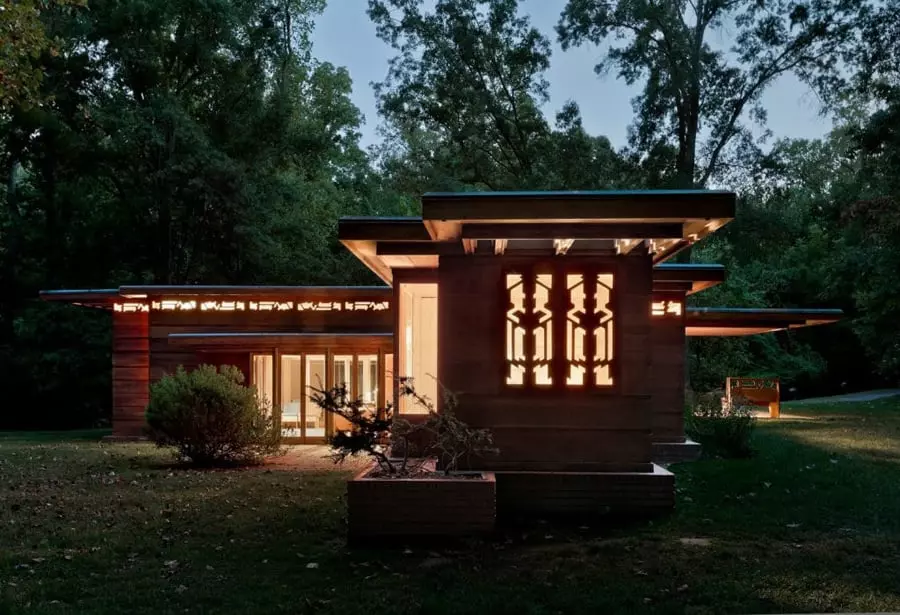 Hanna House
Hanna House
In collaboration with Stanford professors Paul and Jean Hanna, Wright created a unique open-plan design by integrating hexagonal modules. The expansive floor plan encompassed a hobby shop, guest house, storage room, double garage, and garden house. This Usonian home stands as a testament to Wright's mastery of geometry and spatial arrangement.
Pope-Leighey House (1940), Alexandria, Virginia
 Pope-Leighey House Exterior
Pope-Leighey House Exterior
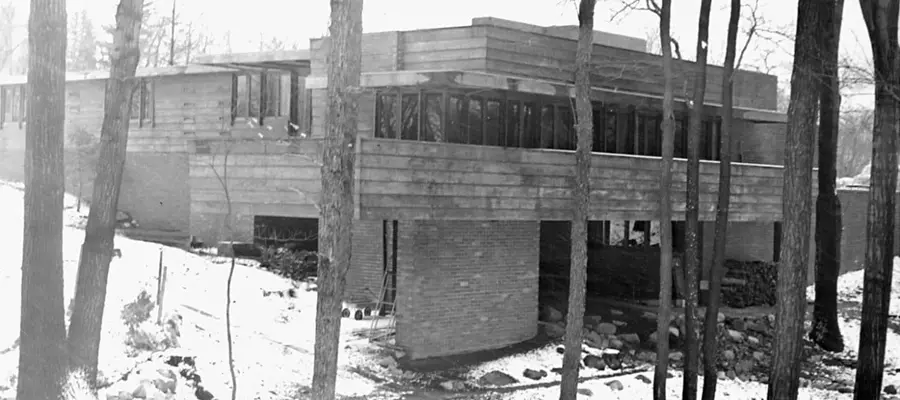 Pope-Leighey House, Interior
Pope-Leighey House, Interior
Designed for journalist Loren Pope and his wife Charlotte, the Pope-Leighey House exemplifies Wright's use of compression and release. The smaller rooms lead to larger, more spacious areas, creating a sense of openness. The cantilevered eaves further enhance the feeling of expansiveness in this 1,200 square-foot Usonian home.
Affleck House (1941), Bloomfield Hills, Michigan
 Affleck House
Affleck House
The Affleck House, nestled within a hilly landscape, showcases Wright's advice to the homeowners, Gregor and Elizabeth Affleck, to find a site that nobody else wanted. The primary unit room offers breathtaking views of a ravine, and the house features built-in shelving and a planter box atrium. This Usonian home embraces a harmonious blend of natural materials and geometric elegance.
Zimmerman House (1950), Manchester, New Hampshire
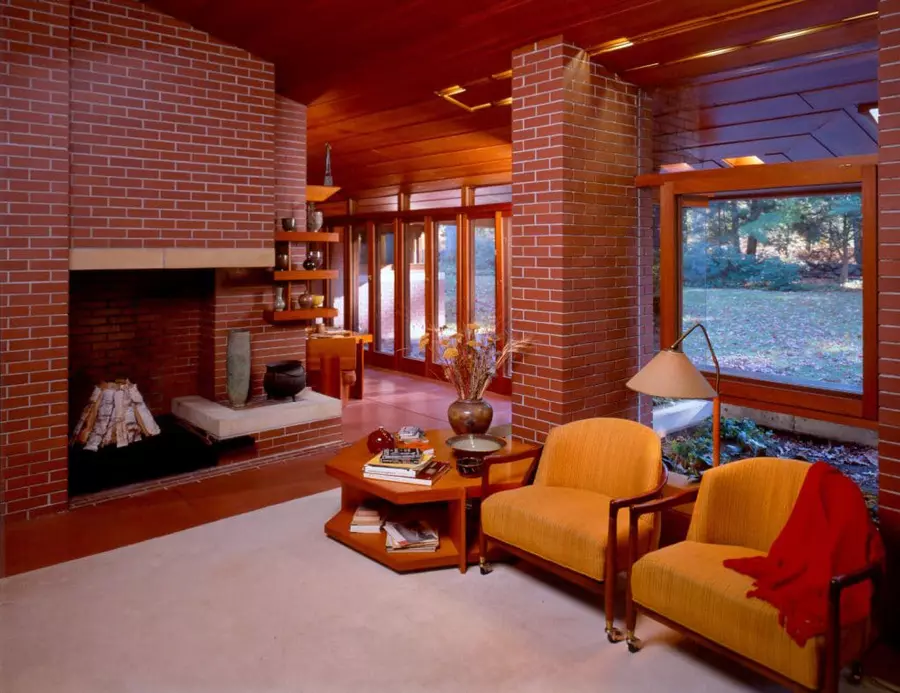 Zimmerman House
Zimmerman House
Situated on a continuous concrete mat, the Zimmerman House showcases Wright's meticulous attention to detail. From the gardens to the furniture, every aspect of the house reflects the architect's vision. The Currier Museum of Art now preserves this Usonian masterpiece, allowing visitors to admire both Wright's design and the Zimmerman's extensive art collection.
Tonkens House (1954), Cincinnati, Ohio
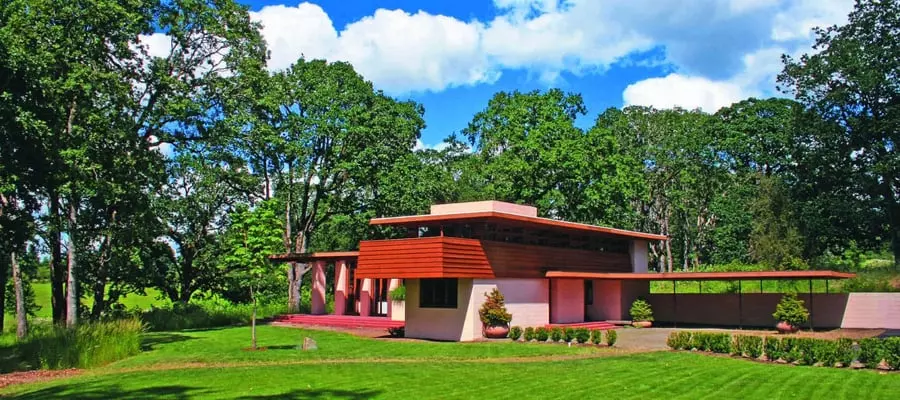 Tonkens House
Tonkens House
The Tonkens House stands as a testament to Wright's inventive use of interlocking concrete blocks. Incorporating eleven different block patterns and over 400 inset windows, this Usonian Automatic home showcases Wright's commitment to both functionality and aesthetic appeal. Although privately owned, the Tonkens House holds a significant place on the National Register of Historic Places.
Gordon House (Designed in 1957, completed 1964), Silverton, Oregon
 Gordon House
Gordon House
Designed by Wright and completed under the supervision of Taliesin apprentice Burton Goodrich, the Gordon House embodies Wright's focus on innovative storage solutions and stunning woodwork. Perforated woodwork, known as "fretwork," adds a touch of elegance to this Usonian home. As part of the Gordon House Conservancy, this site offers a unique educational experience for visitors.
Sharp Family Tourism and Education Center (Completed 2013, designed in 1939), Lakeland, Florida
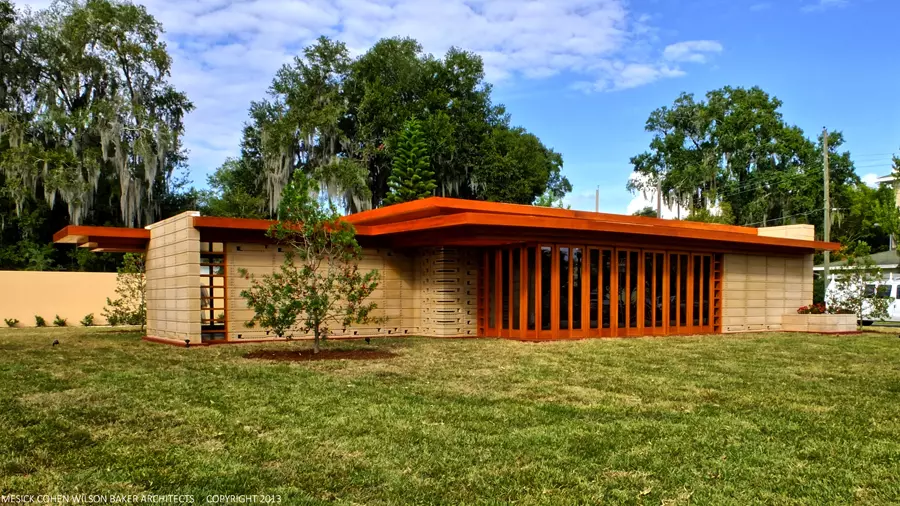 Florida Southern College’s Sharp Education and Tourism Center. All photography of the center courtesy © Miseck Cohen Wilson and Baker / Florida Southern College
Florida Southern College’s Sharp Education and Tourism Center. All photography of the center courtesy © Miseck Cohen Wilson and Baker / Florida Southern College
Located on the campus of Florida Southern College, the Sharp Family Tourism and Education Center represents Wright's enduring influence. This Usonian house, based on a 1939 design, exemplifies Wright's commitment to integrating architecture with nature. As you explore the campus, you'll discover numerous Wright-designed buildings that celebrate his visionary approach to design.
These seven hidden gems from Frank Lloyd Wright's Usonian period demonstrate his ability to blend architecture, nature, and functionality seamlessly. Each home tells a unique story, preserving Wright's legacy for generations to come. If you're captivated by these architectural wonders, you'll surely appreciate "How MoMA Preserved the Models Frank Lloyd Wright Loved to Tinker With."
Now, go out and explore these remarkable homes in person, experiencing firsthand the genius of Frank Lloyd Wright.

















